-
Welcome to the friendly and historical Bagamoyo
- Posted on februar 1, 2012
- by Moyo Mmoja
- in Guesthouse information
- No Comments.
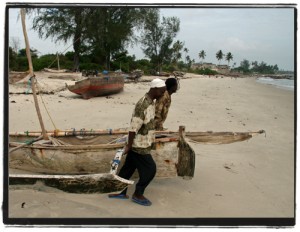 Bagamoyo is a peaceful small town with historic roots. Years ago this was an important port strategically placed along Africa’s east coast, thus making it a cultural meeting point between Africans, Arabs and Indians.
Bagamoyo is a peaceful small town with historic roots. Years ago this was an important port strategically placed along Africa’s east coast, thus making it a cultural meeting point between Africans, Arabs and Indians.It also used to be were captured slaves taken from the inland of Africa were brought and kept before being shipped, like other commodities, to the prior slave market in Zanzibar – and then to the Middle East and India. There is a small museum in Bagamoyo located at the old Catholic mission grounds mainly dedicated to the slave trade history and there are memorials of David Livingstone who was taken there after his death in present-day Zambia. Bagamoyo was the capital of the colony of German East Africa, and many buildings still exist from the time. Well worth a visit is also the sandy beach of Bagamoyo (with and without the fancy hotels). The Catholic mission has been given credit for the abolishment of the slave trade in the early 20th century, and the aiding of escaped and freed slaves. Although the Mission has had an important role in this area, most people are Muslims.
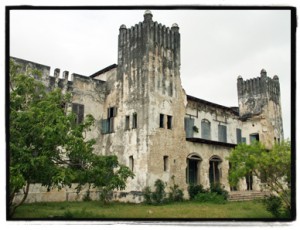
There are also a few buildings dating back to the colonial era. They were erected by the German colonial administration, but left to the British colonial administration after Germany lost their colonies as a result of the First World War. Most of these buildings are in bad shape, partly collapsing. The windows are broken, and iron plates attached to the roofs are a hazard for people walking nearby on windy days. Some of the buildings are being restored these days and mainly used by government administration.
However most important to note is the people of today’s Bagamoyo and their welcomeness to any visitor that is not afraid to slightly adapt to, or at least respect, local customs. You do that and the people will welcome you again and again – and your response will be to return. Again and again.
For those who like to read:
Bagamoyo is beautifully situated on the Tanzanian coast. The Indian Ocean stretches out like a turquoise blanket from the white beach, and at night you can sometimes see the lights from Zanzibar in the distance.
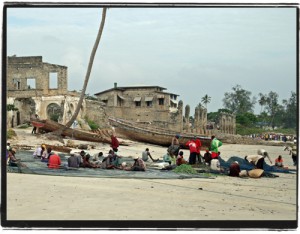 The rich natural environment is breathtaking; the beach and the sea, the mangroves filled with life, the greenness of the bush with its great variation of trees and plants, and the rivers running through the surrounding areas. This amazing richness of nature is mixed with human activities in many forms. Every morning fishermen go out in their long and narrow wooden boats, setting sail towards the great ocean. Sometimes they stay out on the sea all night. The sea is of unprecedented value for the area, and the gifts of the ocean have always been a source of survival along the coast, both through fishing and trade.
The rich natural environment is breathtaking; the beach and the sea, the mangroves filled with life, the greenness of the bush with its great variation of trees and plants, and the rivers running through the surrounding areas. This amazing richness of nature is mixed with human activities in many forms. Every morning fishermen go out in their long and narrow wooden boats, setting sail towards the great ocean. Sometimes they stay out on the sea all night. The sea is of unprecedented value for the area, and the gifts of the ocean have always been a source of survival along the coast, both through fishing and trade. When the fishermen return with their catch of the day, the large and lively fish market opens. Some people work in small, open stalls where they cook and sell fish. You can hear bargaining and loud conversations between salesmen and customers, and be
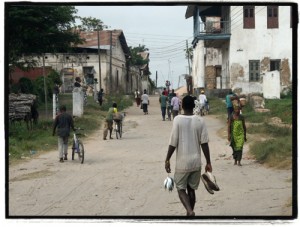 tween friends and colleagues. Many children work at the fish market, doing multiple tasks assisting the fishermen. The smell of fish is mixed with the smell of fish guts rotting in the sun and smoke from the cooking pans – a smell which certainly takes some getting used to. The fishermen are not done for the day when they bring in the fish. The fish nets have to be mended. Some of the nets are gigantic and it takes many square meters of beach to lay the whole thing out. The boats also need to be looked after and you can see different repair work being performed as you walk along the beach. Women and children collect seashells or seaweed when the low tide reveals hundreds of meters of dry sea-floor.
tween friends and colleagues. Many children work at the fish market, doing multiple tasks assisting the fishermen. The smell of fish is mixed with the smell of fish guts rotting in the sun and smoke from the cooking pans – a smell which certainly takes some getting used to. The fishermen are not done for the day when they bring in the fish. The fish nets have to be mended. Some of the nets are gigantic and it takes many square meters of beach to lay the whole thing out. The boats also need to be looked after and you can see different repair work being performed as you walk along the beach. Women and children collect seashells or seaweed when the low tide reveals hundreds of meters of dry sea-floor.Another group of people making use of the beach is the boys selling art to the tourists. Many of these boys and young men are,
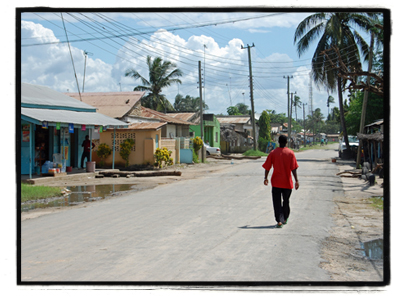 or have been, street children. Some stay in the area close to the beach all the time, also at night. The art that they sell they have either made themselves or they sell it on behalf of friends or on commission for local artists. During the tourist season they manage to make a living, but when the rainy season starts the situation becomes difficult. Many of these boys often refer to their lives as a ‘ghetto life’. They say that the situation ‘is what it is’, and they have to do the best with what they are given.
or have been, street children. Some stay in the area close to the beach all the time, also at night. The art that they sell they have either made themselves or they sell it on behalf of friends or on commission for local artists. During the tourist season they manage to make a living, but when the rainy season starts the situation becomes difficult. Many of these boys often refer to their lives as a ‘ghetto life’. They say that the situation ‘is what it is’, and they have to do the best with what they are given. Away from the beach you find the town centre. The centre is quite small. The streets are crowded and the shops and markets are busy. The traffic is chaotic; there are trucks, buses, cars and motorcycle
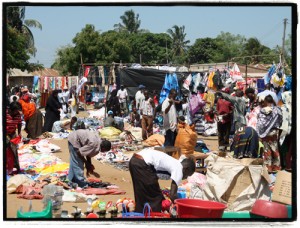 s, bicycles, and people pushing two-wheeled wagons with heavy loads, women carrying amazing quantities of goods on their heads, children running across the road, playing next to the road or walking along the road, chicken and goats looking for food, people shouting, horns honking and wheels squeaking. The areas surrounding the town centre are less busy. They consist of dirt roads, mostly mud houses, some stalls selling fruit and vegetables, food-serving stalls, and people performing their daily routines.
s, bicycles, and people pushing two-wheeled wagons with heavy loads, women carrying amazing quantities of goods on their heads, children running across the road, playing next to the road or walking along the road, chicken and goats looking for food, people shouting, horns honking and wheels squeaking. The areas surrounding the town centre are less busy. They consist of dirt roads, mostly mud houses, some stalls selling fruit and vegetables, food-serving stalls, and people performing their daily routines.While Bagamoyo has a population of approximately 30,000, Bagamoyo District covers an area of almost 9,000 square kilometres and has a population of more than 265,500.
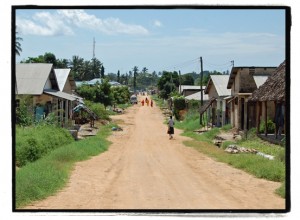 (Excerpts from «Materiality, Structures and Ideology – Poor and Orphaned Children’s Lifesituations in the Bagamoyo District in Tanzania» (2009) by Ragnhild Soerumgaard. Used with permission.)
(Excerpts from «Materiality, Structures and Ideology – Poor and Orphaned Children’s Lifesituations in the Bagamoyo District in Tanzania» (2009) by Ragnhild Soerumgaard. Used with permission.)
If you enjoyed this article please consider sharing it!




